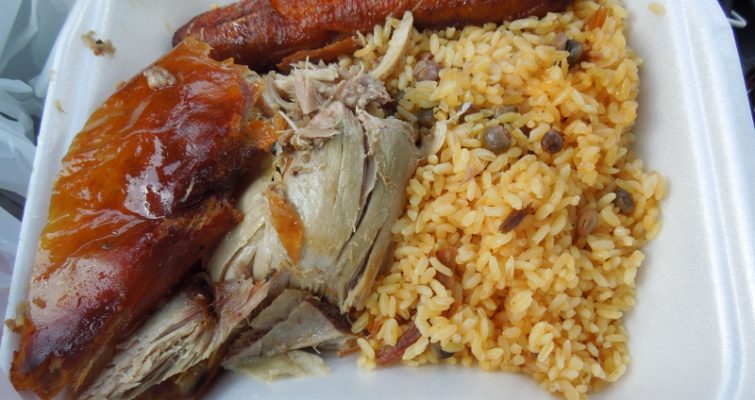
Puerto Rico’s roast meats
There’s plenty here in Puerto Rico for vegetarians to love. Pescatarians too. But carnivores are especially in luck!
This photo shows how a number of restaurants and roadside stands roast meat. From the left, you can see sausage, blood sausage (known in these parts as morcilla), pork shoulder (pernil), chicken, and pork ribs. The meat gets displayed behind a window or showcase, sometimes while it’s being roasted, sometimes when it’s just being kept nice and warm.
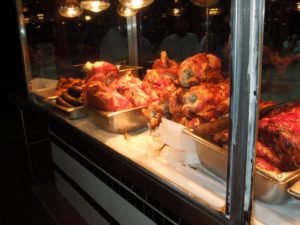
This is Bebo’s BBQ near the San Juan international airport. It’s open 24 hours, if you’re ever in San Juan with a 3am craving.
Some of these BBQ-ish restaurants specialize in lechón, or roast suckling pig. They’re called lechoneras. The pig is roasted on a spit, then chopped into pieces with a machete and served by the pound. Some lechoneras also serve a turkey version called pavochón.
While the meat at these places is the main attraction, some of my tour members have said the side dishes are every bit as good. Standard sides include:
- arroz con gandules (rice with pigeon peas) – note that these are not like green peas, they’re meatier like beans
- amarillos (sweet plantains)
- tostones (discs of savory green plantain fried, then mashed flat into discs)
- batatas (the local variety of sweet potatos, light yellowish in color)
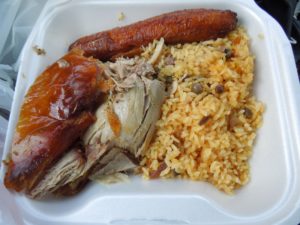
I got a to-go order of lechon, rice with pigeon peas, and an amarillo or sweet plantain. The beautiful shiny thing on the left is a chicharron, or a piece of pork skin, which browns up that way as the pig is roasted. Some people consider that the best part.
Vegetarian warning – if it would bother you to be around a big spit pig, you should not visit Guavate, or probably any lechonera anywhere. They display the pigs in the front window, as a rule. Here’s what it looks like:
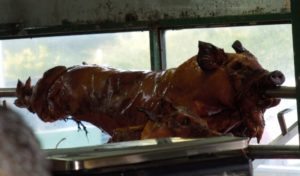
I don’t consider this the most appetizing sight. I’m used to a bigger disconnect between the meat I’m eating and the animal it came from.
NB: Special thanks to Charles Drabkin, who inspired me to visit Guavate for the first time. He’s a genius.



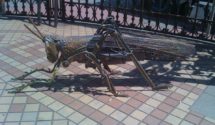
Write Your Comment